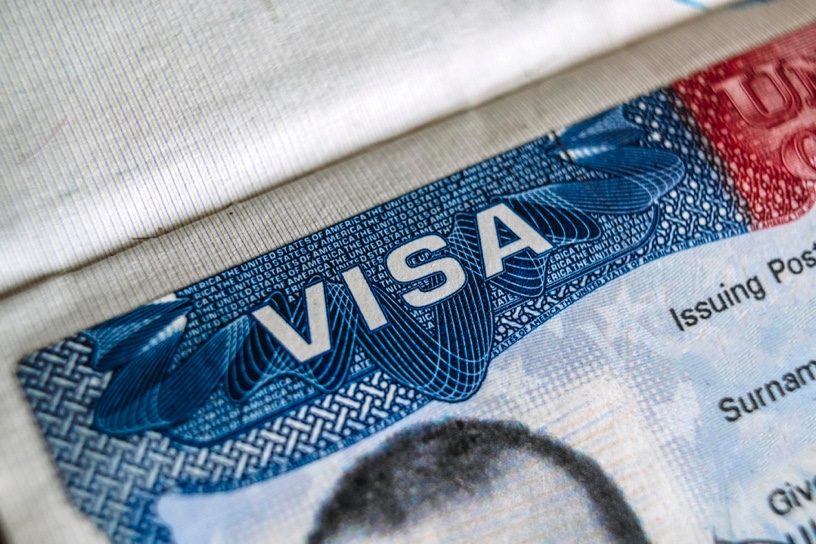
Non-immigrant work visas allow foreign nationals to work temporarily in the United States, offering pathways for professionals, students, seasonal workers, and others to contribute to the U.S. economy. Certain visa categories, like the J-1 exchange visitor visa, allow individuals to participate in academic training related to their fields of study after graduation. These nonimmigrant visas are essential for individuals seeking temporary employment without pursuing permanent residence. This page provides detailed information on the various visa categories, the application process, and how immigration services can assist in navigating the complexities of obtaining a non-immigrant work visa in the USA.
A nonimmigrant work visa enables foreign nationals to work in the United States for a specific period under the oversight of the United States Citizenship and Immigration Services (USCIS). Typically, a prospective employer must file a petition on behalf of the visa applicant with USCIS.
Most applicants for temporary worker visas must have an approved petition. USCIS must approve the petition before the applicant can proceed with their visa application. If the applicant is overseas, to reenter the United States, the foreign national must obtain the nonimmigrant visa at a U.S. consulate to reenter the United States. Family members, such as spouses and children, must complete a separate application process to join the nonimmigrant worker.
The United States government offers various visa categories tailored to specific types of employment, from specialty occupations requiring a bachelor’s degree in the field of work to seasonal jobs and international cultural exchange programs. Each visa category has unique eligibility criteria, ensuring that applicants qualify for the intended employment authorization. Applicants must demonstrate their eligibility for the visa categories during interviews, assessing their qualifications based on U.S. laws.

Several work visas cater to different professions and purposes. Below are the most common nonimmigrant visa types for temporary employment. There are 11 temporary worker visa categories, each designed to address specific employment needs.
B-1 visas are for business visitors engaging in activities like meetings or conferences on behalf of a foreign country’s employer. B-2 visas are for tourists. Both are valid for up to six months, with a possible six-month extension. These visas do not permit employment or include family members, making them unsuitable for those seeking to work permanently or financially support dependents.
The H-1B visa is designed for professionals in specialty occupations requiring specialized knowledge and at least a bachelor’s degree or equivalent. This visa is popular among fashion models of distinguished merit, academics, and professionals in fields like IT or engineering. Granted for up to three years, it can be extended for another three, and in some cases, beyond if a labor certification for permanent residence is in process.
The H-1B visa cap is set at 65,000 per year, plus an additional 20,000 for users with advanced degrees. Employers must pay the prevailing wage, approved via a Labor Condition Application from the Department of Labor, to ensure fair compensation and protect U.S. workers. Employers must also pay H-1B nonimmigrant workers at least the same wages as those paid to other workers with similar qualifications.
H-2A visas support temporary agricultural workers, while H-2B visas cover non-agricultural seasonal workers, such as those in hospitality or construction. The H-2A visa allows U.S. employers to bring foreign nationals to fill temporary agricultural jobs. The H-2B visa allows U.S. employers to bring foreign nationals for temporary nonagricultural jobs.
These visas are ideal for jobs with specific expiration dates, allowing workers to obtain employment authorization for short-term needs. Employers must demonstrate that no U.S. workers are available for these roles.
J-1 visas facilitate international cultural exchange programs, including roles like camp counselors, au pairs, and interns. Applicants must meet eligibility criteria, such as English proficiency, to qualify. J-2 visas are available for spouses and children, enabling family members to join the nonimmigrant worker during their stay.
F-1 visas are for students at accredited academic institutions. Students may obtain employment authorization through programs like Curricular Practical Training (CPT), Optional Practical Training (OPT), or STEM OPT for Science, Technology, Engineering, and Mathematics fields.
F-2 visas cover family members, while F-3 visas are for Canadian or Mexican commuting students. M-1 visas serve students at vocational or non-academic schools, with M-2 and M-3 visas for family and commuters, respectively.
O visas are for individuals with extraordinary ability in the arts, sciences, or business, such as renowned researchers or artists. This includes individuals recognized in the fields of motion picture and television. P visas cater to performers, including P-1 for internationally known athletes and entertainment groups, P-2 for artists in a reciprocal exchange program, and P-3 for culturally unique entertainers. P-4 visas are for dependents, ensuring family admission.
L visas allow intracompany transferees to work in the U.S. for a company with international operations. These are ideal for managers or employees with specialized knowledge transferring from a foreign country to a U.S. branch. L-1 visas allow U.S. employers to transfer an executive or manager from an overseas office to a U.S. office.
Additional visa categories include E-1 and E-2 for treaty traders and investors, E-3 visas are for specialty occupation workers from Australia, H-3 for trainees, I for journalists, R for religious workers, and TN for Canadians or Mexican nationals within certain professional categories. The K-1 visa is for fiancés of US citizens. The H-3 visa includes training programs. Narrowly tailored visas like C, D, S, T, and U cover crewmen, transit, informants, and victims of trafficking, ensuring legal rights for specific groups.
Additionally, spouses of certain nonimmigrant visa holders, such as E and L visa holders, are eligible for employment authorization and can obtain documentation to prove their ability to work in the U.S. without additional applications.

Obtaining a nonimmigrant visa involves several steps:
The application process can be complex, with requirements varying by visa category. Immigration services USCIS oversees approvals, ensuring compliance with United States government regulations. An immigration lawyer can streamline the process, addressing potential legal complications.
To qualify for a nonimmigrant work visa, applicants must meet specific criteria, such as:
Applicants must be qualified for the intended employment authorization. Employers may also have to demonstrate that the employment does not undermine U.S. workers, often requiring Labor Condition Applications or proof of the unavailability of local workers.
Nonimmigrant workers in the United States are entitled to certain legal rights and protections under U.S. law. These rights include the right to a safe working environment, the right to be paid the prevailing wage for their position, and the right to be treated equally with U.S. workers.
Nonimmigrant workers also have the right to report any violations of their rights to the relevant authorities without fear of retaliation. This ensures that all workers, regardless of their immigration status, are protected and can work in conditions that meet U.S. labor standards. Employers are required to comply with these regulations, and failure to do so can result in legal consequences. Understanding these rights is crucial for nonimmigrant workers to ensure they are treated fairly and can seek recourse if their rights are violated.
Non-immigrant work visas offer numerous advantages:

The application process for nonimmigrant visas can be daunting due to strict regulations and potential delays. Issues like incomplete petitions, incorrect visa categories, or failure to meet eligibility criteria can lead to denials. Immigration services from firms like Oltarsh & Associates provide expert guidance, ensuring compliance with USCIS standards and protecting applicants’ legal rights.
For further information, contact Oltarsh & Associates at (212) 944-9420 to schedule a consultation. Their experienced immigration lawyers assist with nonimmigrant status, employment authorization, and navigating border protection requirements.
Navigating the non-immigrant work visa USA landscape requires expertise. Professional immigration services help:
With the total number of visa applicants increasing, professional assistance is crucial to stand out and secure employment authorization.
For more information on nonimmigrant visas, you can visit the USCIS website or contact the U.S. embassy or consulate in your home country. Consulting with an immigration attorney can also provide valuable guidance tailored to your specific situation.
Once you have determined which type of visa you need, you can begin the application process by filing the required forms and documentation with USCIS or the U.S. embassy or consulate. After your application is approved, you will be required to attend an interview at the U.S. embassy or consulate, where a consular officer will determine your eligibility for the visa.
If your application is approved, you will be issued a visa, which will allow you to enter the United States and work temporarily. This process can be complex, so seeking professional assistance can help ensure that all steps are completed correctly and efficiently.
Non-immigrant work visas provide diverse opportunities for temporary workers to contribute to the U.S. economy. From H-1B professionals with specialized knowledge to J-1 participants in reciprocal exchange programs, these visa categories cater to various needs. Understanding the application process, eligibility, and benefits is key to successfully obtaining a nonimmigrant visa.
For personalized assistance, reach out to Oltarsh & Associates for expert immigration services and secure your path to work in the United States.
